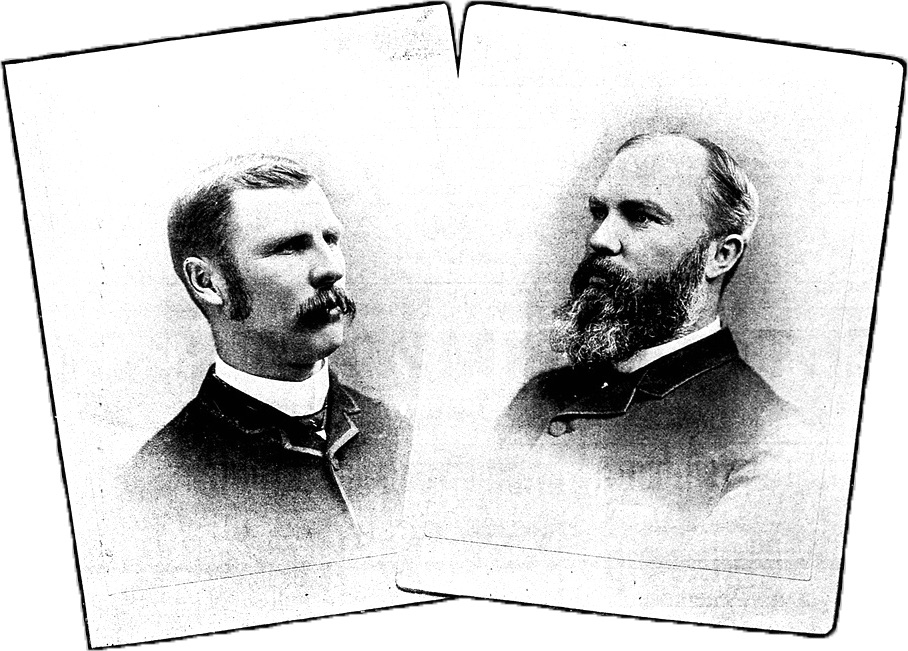Defining Moments in Australian History: Large scale irrigation begins

In 1884, after debilitating droughts, the Victorian government began investigating large-scale irrigation.
Future prime minister Alfred Deakin was appointed Chairman of the Royal Commission on Water Supply and travelled overseas to research existing irrigation systems.
On an 1885 trip to western USA he met the Chaffey brothers, Canadian entrepreneurs who’d created an “irrigation colony” on the Cucamonga Plains near Los Angeles. Enticed by Deakin’s Australian irrigation potential, George Chaffey travelled to Melbourne in February 1886.
He explored the Murray River valley and recognised its potential. Deakin, who believed irrigation was the key to Australia’s agricultural future, assured him the government would make 250,000 acres (1012sq.km) available for sale to the brothers.
George contacted his brother, William, and convinced him to sell their US interests and join him in Australia. George then chose a derelict Mildura sheep station as the centre of their first irrigation settlement.
In October the brothers signed a deal with the Victorian government, guaranteeing they’d invest £300,000 over two decades in the area that would later become known as Sunraysia.
However, in November, legislation authorising the agreement was opposed and the Chaffeys were criticised as “Yankee land grabbers”. The bill was amended to invite other parties to tender for the project.
Meanwhile, South Australia’s premier at the time, Sir John Downer, met and offered the Chaffeys 250,000 acres of Murray riverfront in SA. The brothers accepted and selected land around Renmark.
By May 1887, the Victorian government had received no other tenders for the Mildura project, so the Chaffeys bought the land and moved ahead with a 500,000 acre (2024sq.km) project, laying irrigation channels and building the streetscapes of Mildura and Renmark.
A campaign to attract settlers ran in Australia and Britain, and by December 1890, 3300 people were living in Mildura and 1100 in Renmark – about half of whom were new British immigrants.

Adapting systems from their US enterprises, the Chaffeys developed steam-driven pumps to raise water from the Murray to initially irrigate 33,000 acres (13,400ha).
Early harvests were abundant, but disputes about water rights, land boundaries and the status of the Chaffeys’ Mildura Irrigation Company soon erupted among settlers. While the Chaffeys earned income from the sale of their land, the situation was manageable.
But as a recession set in across Australia, their real estate revenues dried up and quarrels among settlers became political. BC Harriman, formerly of the Department of Crown Lands and Survey, told residents the Mildura Irrigation Company’s practices were illegal. Settlers’ complaints were brought before the Victorian parliament, and respected water engineer Stuart Murray was tasked with investigating their grievances. His findings led to the government setting up the Mildura Irrigation Trust, which took over responsibility for the project.
On 10 December 1895 the Chaffey brothers’ company went into liquidation. Those first generous harvests proved to be a false hope for the early orchardists. Harvest yields stabilised, but with no railway yet available, there were problems transporting the fruit to market. Settlers used riverboats to carry the crop, but in 1893 the Murray dropped to record low levels and the harvest was stranded. That year the country entered a recession and the promised Melbourne–Sydney rail link was put on hold.
When the Chaffeys went into liquidation the banks foreclosed on hundreds of local farmers, and the salinity problems that continue to plague the Murray–Darling basin emerged. George Chaffey returned to the USA but William stayed in Mildura and helped the Sunraysia district become the “fruit basket of Australia”.
By 1903 the rail link had arrived, banking had stabilised, the Mildura Irrigation Trust was competently managing the irrigation system and plans to control salinity were underway.
Despite limited early successes, the Chaffeys’ project was Australia’s first large-scale irrigation scheme and became a model for others around the country.
Sunraysia has since become one of Australia’s most important agricultural production regions; more than 60,000 people live there now, and it produces 80 per cent of Victoria’s grapes and most of Australia’s dried grapes. It also produces citrus and almonds.
‘Large scale irrigation begins’ forms part of the National Museum of Australia’s Defining Moments in Australian History project:




